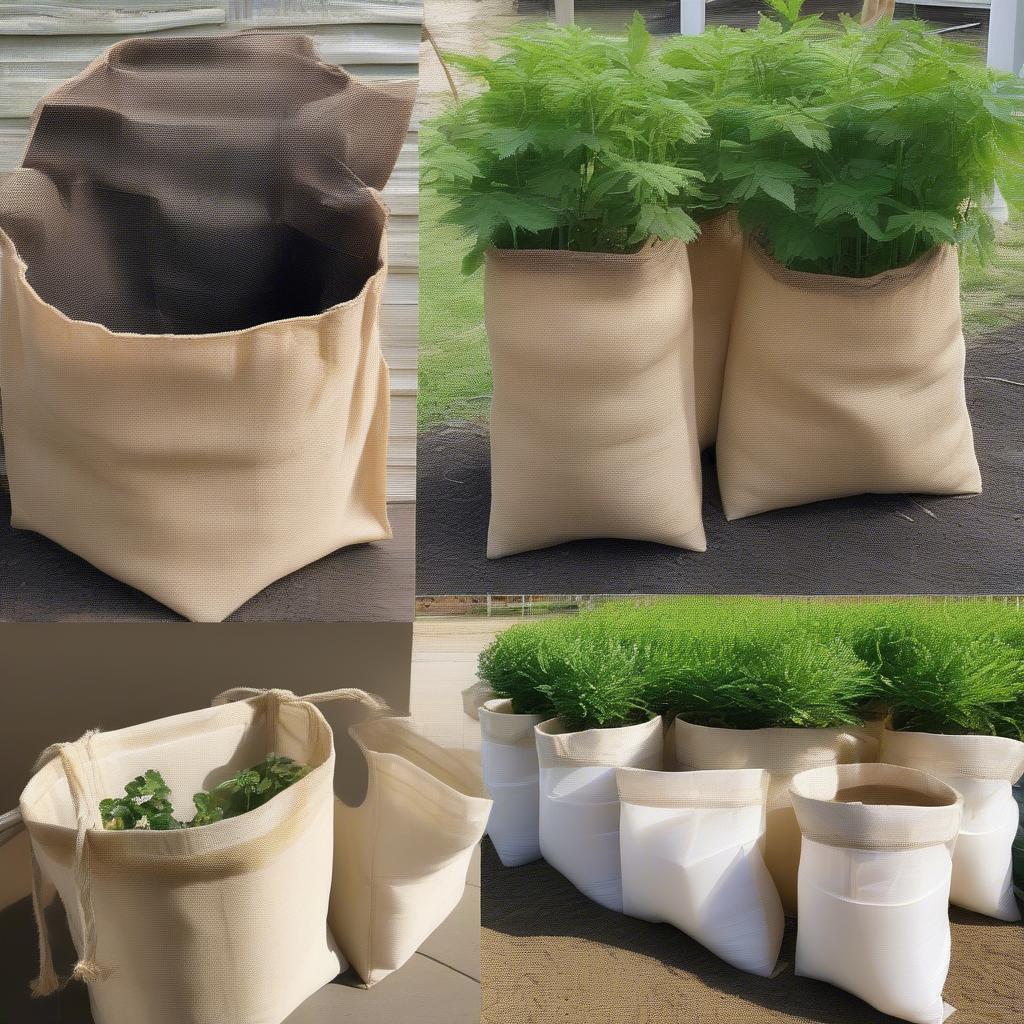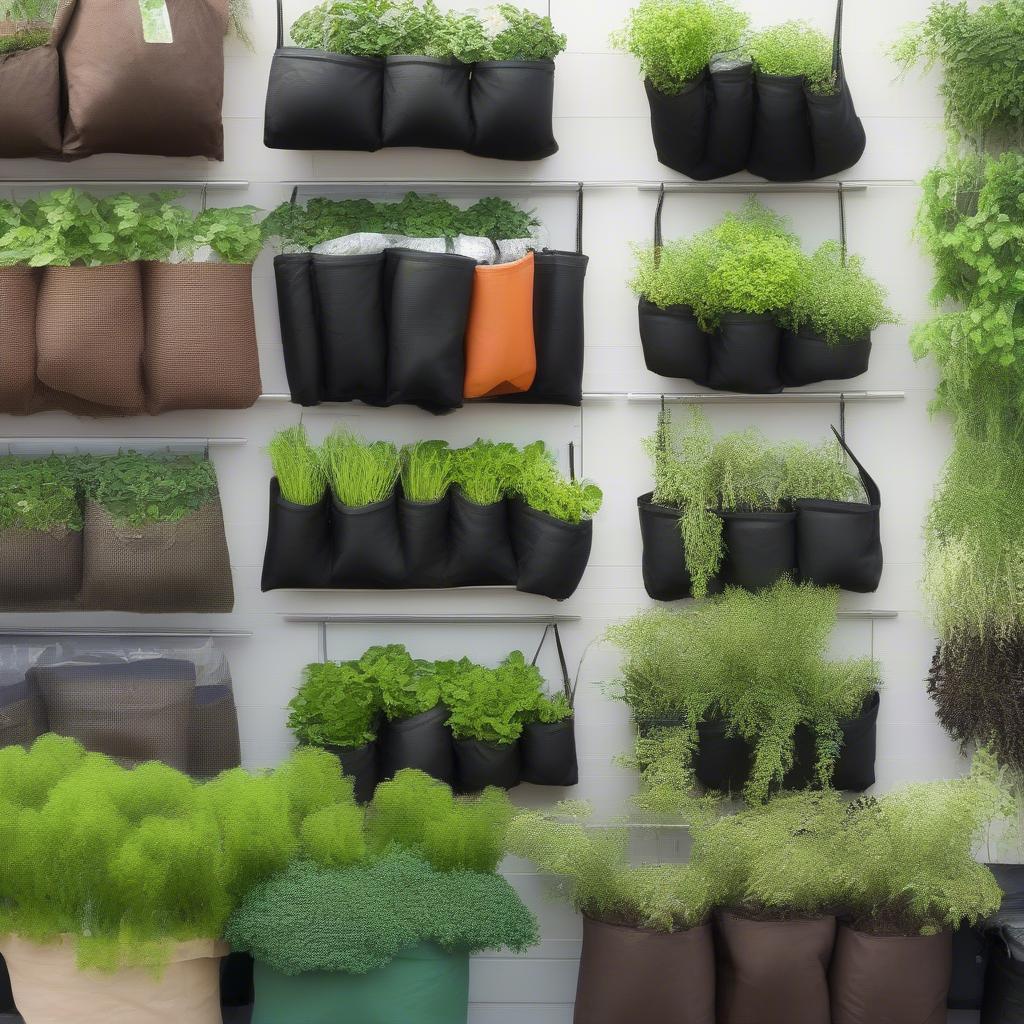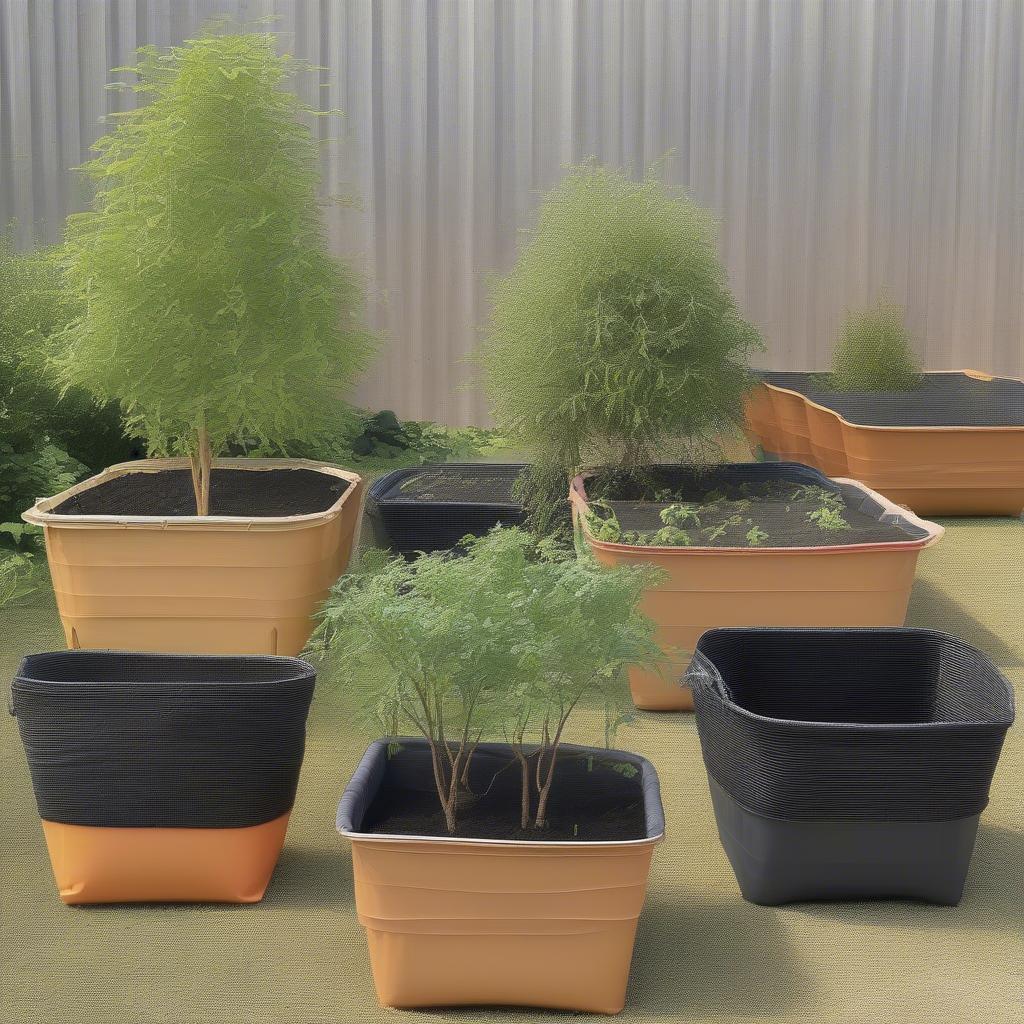Woven Bag
Woven Grow Bags: A Comprehensive Guide
Woven Grow Bags offer a sustainable and efficient way to cultivate a thriving garden. From their unique construction to diverse applications, this guide explores everything you need to know about woven grow bags, helping you make informed decisions for your gardening needs. what are most non woven grow bags made of
Understanding Woven Grow Bags: Materials and Benefits
Woven grow bags are typically made from durable, breathable fabrics like polypropylene or burlap. Unlike plastic pots, these materials allow for superior air circulation, preventing root circling and promoting healthy root development. This leads to stronger, more productive plants. Woven grow bags also offer excellent drainage, reducing the risk of overwatering and root rot. They are lightweight and easy to move, making them ideal for small spaces, balconies, and patios.
 Woven Grow Bags in Different Sizes and Materials
Woven Grow Bags in Different Sizes and Materials
What are the key advantages of using woven grow bags? They offer several benefits: portability, improved aeration, better drainage, and temperature regulation. They are also reusable and contribute to sustainable gardening practices. For those looking for a more eco-conscious approach, woven grow bags provide an excellent alternative to traditional plastic pots.
Choosing the Right Woven Grow Bag for Your Plants
Selecting the appropriate woven grow bag depends on several factors, including plant size, root system, and growing conditions. Smaller bags are suitable for herbs, vegetables with shallow roots, and seedlings. Larger bags accommodate bigger plants, shrubs, and even small trees. Consider the material as well. Burlap bags are biodegradable and offer a natural look, while polypropylene bags are more durable and long-lasting.
Matching Bag Size to Plant Needs
How do you choose the right size woven grow bag? Consider the mature size of your plant. A small bag (1-5 gallons) is suitable for herbs and strawberries. Medium bags (5-10 gallons) work well for tomatoes, peppers, and smaller shrubs. Larger bags (10+ gallons) are best for larger plants like fruit trees or large shrubs.
 Various Plants Thriving in Woven Grow Bags
Various Plants Thriving in Woven Grow Bags
Caring for Plants in Woven Grow Bags
Woven grow bags require slightly different care compared to traditional containers. Due to their breathable nature, they dry out faster, requiring more frequent watering. Monitor the moisture levels regularly, especially during hot weather. Fertilizing is also crucial for optimal growth, as nutrients leach out more readily with increased watering.
Watering and Fertilizing Tips
How often should you water woven grow bags? This depends on the climate, plant type, and bag size. A good rule of thumb is to water when the top inch of soil feels dry. For fertilizing, use a balanced, water-soluble fertilizer every 2-4 weeks during the growing season.
non woven bags demand in africa
Woven Grow Bags vs. Other Growing Methods
Compared to traditional plastic pots, woven grow bags offer significant advantages in terms of aeration and drainage. They also prevent root circling, a common problem in plastic pots. While raised beds provide more space, woven grow bags offer greater flexibility and portability, making them ideal for urban gardening or limited spaces. white woven fabric grow bags
 Comparison of Woven Grow Bags, Plastic Pots, and Raised Beds
Comparison of Woven Grow Bags, Plastic Pots, and Raised Beds
Conclusion
Woven grow bags are a versatile and effective solution for growing a variety of plants. Their unique benefits, including improved aeration, drainage, and portability, make them a valuable addition to any gardener’s toolkit. By choosing the right size and material, and following proper care guidelines, you can cultivate healthy, thriving plants in woven grow bags.
FAQs
-
Are woven grow bags reusable? Yes, most woven grow bags are durable and can be reused for multiple growing seasons.
-
What types of plants are suitable for woven grow bags? A wide range of plants, from herbs and vegetables to shrubs and small trees, can thrive in woven grow bags.
-
How do I prevent woven grow bags from drying out too quickly? Mulching the top of the soil can help retain moisture.
-
Can I use woven grow bags indoors? Yes, woven grow bags are suitable for both indoor and outdoor gardening.
-
Are woven grow bags biodegradable? Some woven grow bags, like those made from burlap, are biodegradable. Others, like polypropylene bags, are not.
You can find more information about using non-woven grow bags here: how to use non-woven nursery bags plant grow bags.
For support, contact our 24/7 customer service team at +84 388 951 999 or visit our offices in Hanoi, Vietnam, or Tech Avenue, Suite 12, San Francisco, CA 94105, USA.
